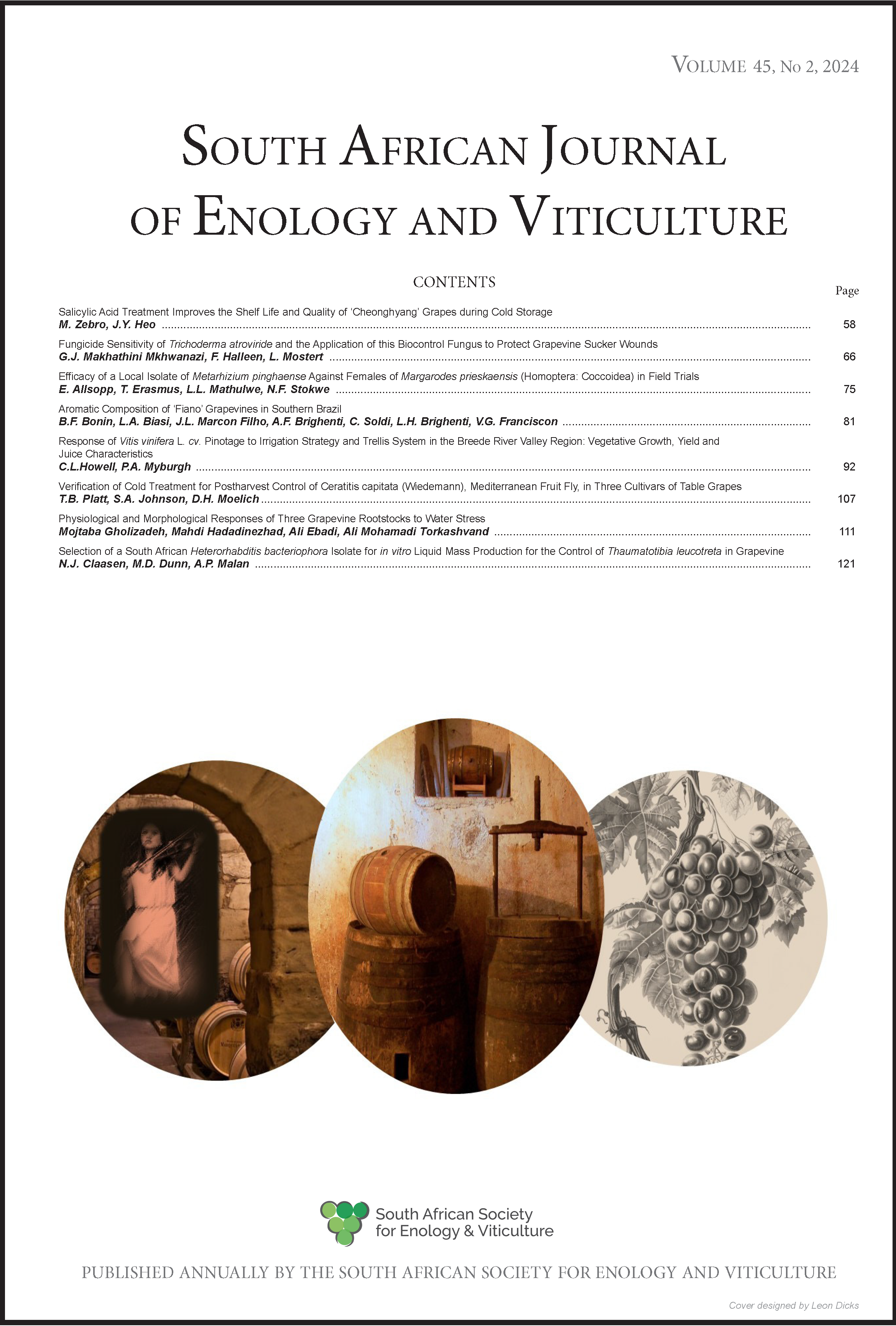Selection of a South African Heterorhabditis bacteriophora Isolate for in vitro Liquid Mass Production for the Control of Thaumatotibia leucotreta in Grapevine
n/a
DOI:
https://doi.org/10.21548/45-2-6571Abstract
The South African table grape industry requires biological control options for pest insects to maintain export relationships. Entomopathogenic nematodes (EPNs) has shown effective biological control of the economically important table grape pest, Thaumatotibia leucotreta, the false codling moth (FCM). Critical to the success of EPNs is their ability to be mass produced using in vitro liquid mass production methods. The selection of suitable isolates for mass production is the most important step in the process of developing an EPN biocontrol product for commercial purposes. Heterorhabditis bacteriophora is the most common EPN species found in South African soils, with previous research having shown its high pathogenicity against a variety of grapevine pest insects. In this study, four local H. bacteriophora isolates were laboratory-screened to select the best candidate in terms of virulence against FCM, and differences in the symbiotic bacteria isolates were also observed. Two of the H. bacteriophora isolates, CRI_LC and LLM’s symbiotic Photorhabdus bacteria, showed slight bioluminescence, while SGI_170 and Px_SPH showed strong luminescence, indicating the biological difference between the symbiotic bacterial species that are associated with the same nematode species. Molecular analysis of the 16S gene indicate three different bacterial species, of which two were the same and two are possibly new. The H. bacteriophora isolate, SGI_170, which showed the highest virulence against late-instar FCM larvae, was chosen for the further development of in vitro liquid culture.
Downloads
Downloads
Published
Issue
Section
License
A copyright form will be e-mailed to the corresponding author when the manuscript has been accepted for publication.
In principle, the Author agrees to the following when he/she signes the copyright agreement:
I hereby assign to the SOUTH AFRICAN SOCIETY FOR ENOLOGY AND VITICULTURE (SASEV) the copyright of the text, tables, figures, supplementary material, illustrations and other information (the Material) submitted with the manuscript to be published in SOUTH AFRICAN JOURNAL OF ENOLOGY AND VITICULTURE (SAJEV) (the "Article"). The copyright becomes effective from the date the Article has been accepted for publication in SAJEV.
This is an open access journal, and the authors and journal should be properly acknowledged, when works are cited.
Author's may use the publishers version for teaching purposes, in books, theses, dissertations, conferences and conference papers.
A copy of the authors' publishers version may also be hosted on the following websites:
- Non-commercial personal webpage or blog.
- Institutional webpage.
- Authors Institutional Repository.
The following notice should accompany such a posting on the website: This is an electronic version of an article published in SAJEV, Volume XXX, number XXX, pages XXX - XXX, DOI. Authors should also supply a hyperlink to the original paper or indicate where the original paper (www.journals.ac.za/index.php/sajev/) may be found.
Authors publishers version, affiliated with the Stellenbosch University will be automatically deposited in the University's Institutional Repository SUNScholar.
Articles as a whole, may not be re-published with another journal.
The following license applies:
Attribution CC BY-NC-ND 4.0

